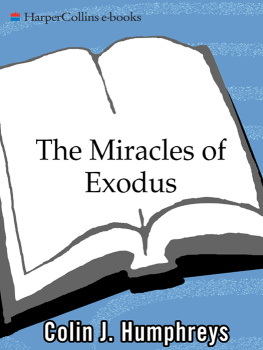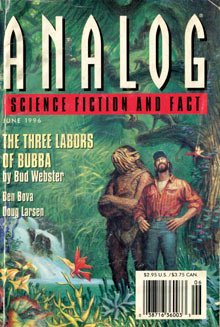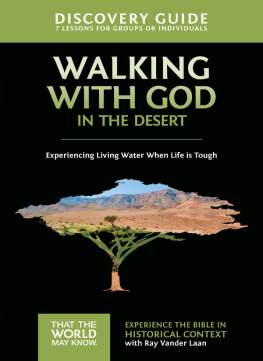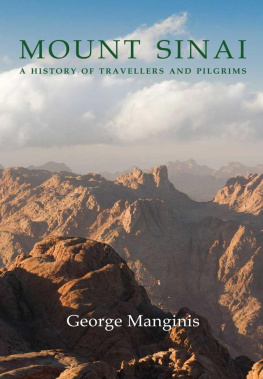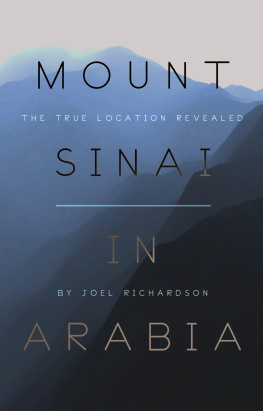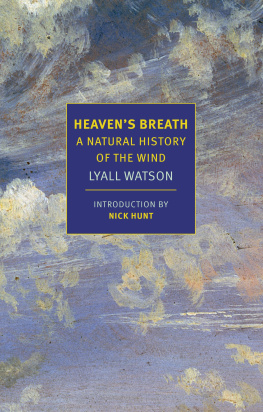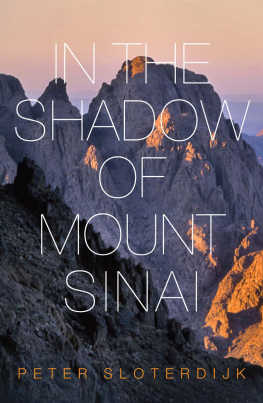Contents
11. The Journey Starts:
The Pillar of Cloud and the Pillar of Fire

1.1. View from the top of the traditional Mount Sinai, Jebel Musa, in the Sinai Peninsula .
Mount Sinai was covered with smoke, because the Lord descended on it in fire. The smoke billowed up from it like smoke from a furnace, the whole mountain trembled violently, and the sound of the trumpet grew louder and louder. Then Moses spoke and the voice of God answered him .
Exodus 19:18, 19
A s I stood in the red light of the rising sun shining on the summit of Mount Sinai in the Sinai Peninsula, I sensed something was wrong. Why was this particular mountain special? Why had Moses led the Israelites about three thousand years ago to this mountain and not to one of the other mountains in the Sinai Peninsula, or even farther afield? To be sure, this mountain was majestic, but so were the other mountains visible from the top of Mount Sinai (see figure 1.1). There appeared to be nothing special about this particular mountain.
And then I looked down to the dry and truly barren land below. How could two million Israelites, or even twenty thousand with their flocks and herds of animals, have survived for about a year at the desolate foot of Mount Sinai? There was little water and virtually no vegetation, apart from stunted acacia bushes dotted sparsely about. How could they have survived forty years of wandering in this barren wilderness? I knew that the Old Testament described the Israelites as living on quail, but these are migratory birds that pass over the Sinai Peninsula only in spring and autumn. In any case, the Bible texts refer to the Israelites eating quail on only two occasions, each for a few days. How were the Israelites, and their flocks and herds that lived on grass and plants, to survive at other times in the desolate wilderness of the Sinai Peninsula?
There, in the spring of 1995, standing on the top of the traditional Mount Sinai, also called Jebel Musa, the Mountain of Moses, I resolved to tackle the problem of finding the real Mount Sinai. I knew that many historians and biblical scholars had worked on this problem, but I had an idea for a completely different approach: a more comprehensive study using the understanding of nature provided by modern science. I am a scientist, and as we will see later, looking at the events of the Exodus through the lenses of science does indeed enable us to solve the puzzle of what really happened three thousand years ago. However, the science has to be applied in the context of our knowledge of the ancient Israelites and ancient Egyptians. We will need to understand the history and the geography of the countries involved in the route of the Exodus. We will need to study the main source of information on the Exodus: the Old Testament.
Science and Miracles
Why might a scientific approach be useful in helping to solve the problems of the Exodus? Science involves the study of the universe, including our planet Earth, using detailed observation, logical thinking, and experiment. Scientists try to understand nature and answer questions like how a lunar eclipse occurs or how metals conduct electricity or how our brain works. The account of the Exodus abounds in extraordinary events reported to have occurred in nature, including a burning bush that wasnt consumed, the ten plagues of Egypt, a pillar of fire and a pillar of cloud in the sky, the Red Sea being forced back so that the Israelites could cross then returning so rapidly that the Egyptian army was drowned, water from a rock, special food called manna, a mountain blazing with fire at its summit, and the River Jordan ceasing to flow, which enabled the Israelites to cross. These events are reported as occurring in our natural world, and some are explicitly stated in the Bible to have had a natural cause. We should therefore expect that present-day science may have an important contribution to make in our understanding of the events of the Exodus. Indeed, as we will see later in this book, I believe there is a natural explanation for all of the events listed above. In many cases this enables us to pinpoint geographically where these events must have occurred, and thus we can reconstruct the extraordinary Exodus journey. As far as I am aware, this is the first time that science (geology, biology, physics, chemistry, and mathematics), in combination with history, geography, archaeology, ancient languages, and the Old Testament text, has been used to reconstruct the route of the Exodus.
A natural explanation of the events of the Exodus doesnt to my mind make them any less miraculous. As we will see, the ancient Israelites believed that their God worked in, with, and through natural events. What made certain natural events miraculous was their timing: for example, the River Jordan stopped flowing precisely when the Israelites were assembled on its banks and desperate to cross. I will give a detailed natural explanation of this miracle in the next chapter. I believe this natural explanation makes this miracle more, not less, believable.
About This Book
Like most books, this one is meant to be read from the front to the back. However, if you want to know what happened at the crossing of the Red Sea, for example, then you can go straight to the relevant chapter. Ive tried to write this book so that each chapter is reasonably self-contained. I do hope, however, that you wont read only the highlight chapters on miracles like the Red Sea crossing. To do so would be to miss fascinating chapters like The Lost Site of Etham, which doesnt involve miracles at all and is about finding a lost biblical site. It is only if you read the book straight through, from cover to cover, that you can see how the epic events of the Exodus unfold. Only then can you appreciate just how remarkable and amazing the Exodus was.
As Ive said above, this book brings together knowledge from science, history, geography, archaeology, ancient languages, and the Bible to try to understand what really happened at the Exodus. Im well aware that as a scientist I dont have expertise in all these areas, so Ive done a large amount of reading and Ive consulted with experts in these areas. In particular, Robert Gordon, the Regius Professor of Hebrew in the University of Cambridge, has kindly read and commented upon every chapter in this book. Robert is an international expert in Hebrew and the Old Testament. Others Ive consulted with include Alan Millard, professor of Hebrew and Ancient Semitic Languages in the University of Liverpool, John Ray, professor of Egyptology in the University of Cambridge, and William Facey, director of the London Centre of Arab Studies. Alan is an international authority on the Bible, ancient Israel, and Middle Eastern languages. John is a world expert on ancient Egypt. William has substantial knowledge about ancient Arabia. So, in writing this book Ive interacted with some of the leading experts in the world, who have put me right and given me help in a number of places. However, the new interpretations of the Exodus story in this book are mine. Many of these interpretations are totally new and not to be found in any other book.
Summary of the Exodus Story
As you know, the Exodus story starts with the Israelites in Egypt. They were slaves, helping to build cities for a cruel and oppressive pharaoh. One day Moses was born. His mother hid him in a basket among the reeds along the bank of the river Nile, because the Egyptians were killing the Hebrew male babies. Miraculously he survived. Pharaohs daughter heard him crying, rescued him, and brought him up in an Egyptian palace. When Moses had grown up he saw an Egyptian slavemaster beating a Hebrew slave, and Moses, in his anger, killed the Egyptian. Moses then feared for his own life and fled to the land of Midian, outside of Egyptian control.

